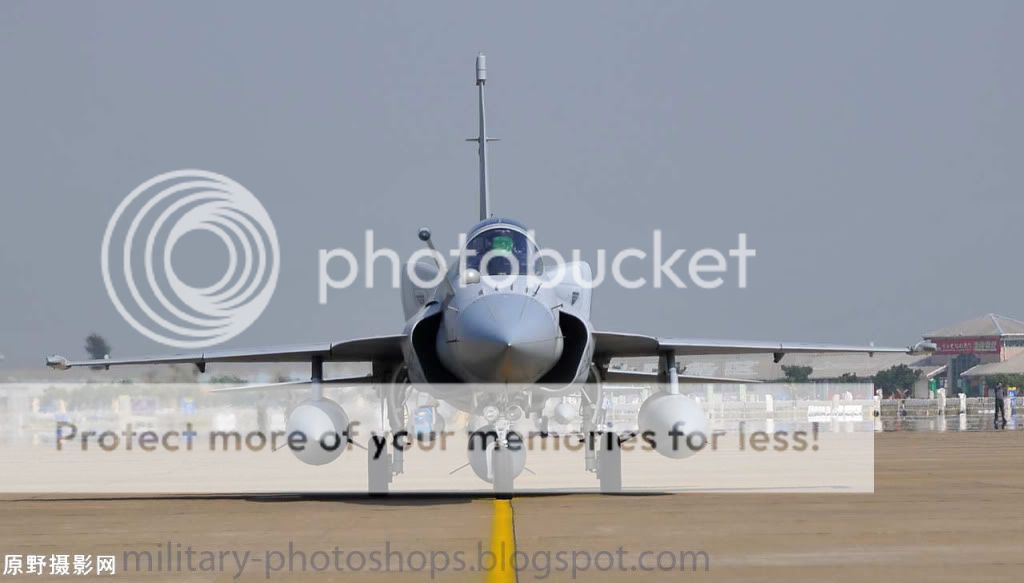Asian.Century
ELITE MEMBER

- Joined
- Nov 1, 2010
- Messages
- 10,754
- Reaction score
- -2
- Country
- Location
As for the sale of JF 17 s, pakistan needs to stop talking about it---stop marketing like going to every country, Put a veil on the program for awhile. The Pakistan Air Force is NOT, means NOT qualified to do marketing and selling of an aircraft. It is a sale and market company....it must hire a proper Pakistan national marketing company to do the job.
That said, there are plenty of countries out there that do not have the option to go and simply buy used F-16s, yet they operate F-7s and other old fighters. MiG-29 and Su-30 may be an option for quite a few of them, but I doubt either is as accessible (financially and politically) as JF-17. There's something stopping these air forces from getting JF-17 and it's not likely the fighter itself or Pakistan, but other powers.
Countries such as Nigeria, Albania, Bangladesh, etc are like Pakistan in that their rulers don't care about vital national interests, they're just looking to make a quick buck from aid and shady investment. These governments are basically sell-outs and could care less about the needs of their armed forces, the pockets of generals notwithstanding.
The ones enabling that aid and investment are governments - e.g. America - that do not want systems such as JF-17 prolific and operated globally. Let alone the possibility of a BVR and precision-strike platform being everywhere, imagine the thought of the Chinese deepening their military-to-military relations across Africa, the Balkans, Asia, etc. Heck imagine if Pakistani officers end up in half as many places as the Chinese...
Some of these air forces might have prepared the papers for evaluating JF-17, but when the papers went up the chain, they got "lost" (i.e. shredded).
Back to the topic of used F-16s, I think the PAF is actively aiming to build a fleet of 100+ F-16A/Bs of various types (OCU, ADF and MLU). I'm interested in seeing how F-16C/Ds go. In 2005 (pre-earthquake) the PAF intended to acquire as many as 55-75 new F-16C/Ds, it'd be interesting to see if they can reach that point. Of course, new F-16s are largely out of the question, but used F-16C/Ds are possible, and with CCIP as well as new upgrades (e.g. AESA), these might be very potent.
It is a must all the Mirages, F16s and JF17s must have AESA radars as minimum levels.
JF17 Thunder is turning out to be one great potent, reliable and modern multi-role fighter aircraft and the work of development and research on it must continue on, vigorously.
That said, there are plenty of countries out there that do not have the option to go and simply buy used F-16s, yet they operate F-7s and other old fighters. MiG-29 and Su-30 may be an option for quite a few of them, but I doubt either is as accessible (financially and politically) as JF-17. There's something stopping these air forces from getting JF-17 and it's not likely the fighter itself or Pakistan, but other powers.
Countries such as Nigeria, Albania, Bangladesh, etc are like Pakistan in that their rulers don't care about vital national interests, they're just looking to make a quick buck from aid and shady investment. These governments are basically sell-outs and could care less about the needs of their armed forces, the pockets of generals notwithstanding.
The ones enabling that aid and investment are governments - e.g. America - that do not want systems such as JF-17 prolific and operated globally. Let alone the possibility of a BVR and precision-strike platform being everywhere, imagine the thought of the Chinese deepening their military-to-military relations across Africa, the Balkans, Asia, etc. Heck imagine if Pakistani officers end up in half as many places as the Chinese...
Some of these air forces might have prepared the papers for evaluating JF-17, but when the papers went up the chain, they got "lost" (i.e. shredded).
Back to the topic of used F-16s, I think the PAF is actively aiming to build a fleet of 100+ F-16A/Bs of various types (OCU, ADF and MLU). I'm interested in seeing how F-16C/Ds go. In 2005 (pre-earthquake) the PAF intended to acquire as many as 55-75 new F-16C/Ds, it'd be interesting to see if they can reach that point. Of course, new F-16s are largely out of the question, but used F-16C/Ds are possible, and with CCIP as well as new upgrades (e.g. AESA), these might be very potent.
It is a must all the Mirages, F16s and JF17s must have AESA radars as minimum levels.
JF17 Thunder is turning out to be one great potent, reliable and modern multi-role fighter aircraft and the work of development and research on it must continue on, vigorously.







